CONSERVATION
“Society is defined not only by what it creates, but by what it refuses to destroy.” – John Sawhill, President and CEO of the Nature Conservancy
Mission
The non-profit Cloud Forest Conservation Alliance (CFCA) supports and guides the operations of the Cloudbridge Nature Reserve and seeks to expand the knowledge, skills, tools, practices and physical facilities available there. The CFCA collaborates with individuals, educational institutions, non-governmental and governmental organizations that hold similar values toward education, conservation and sustainability. Its vision is that the Cloudbridge campus will become an international destination known for its thriving, learning laboratory and variety of life-shaping, immersive experiences in the cloud forest.
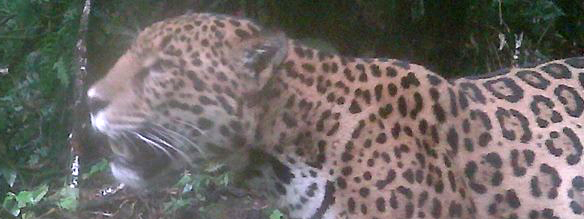
How It’s Done
We treat it as our urgent responsibility to engage in and promote sound environmental and conservation practices, to both reduce our impact on the environment, and improve the environment around us. Through leading by example and actively teaching, we hope to serve as a role model for our global visitors and volunteers. Acting locally, we contribute to Costa Rica’s carbon neutrality goal by:
- Conserving our old growth forest
- Planting over 50,000 native trees on our land (as of January 2017)
- Assisting local communities with their tree planting efforts
- Providing useful and helpful information on our website and links to pages where interested people can learn more
- Providing interpersonal education through our Welcome Center and art gallery at Cloudbridge, so visitors, volunteers and researchers can all become better informed about conservation and climate change
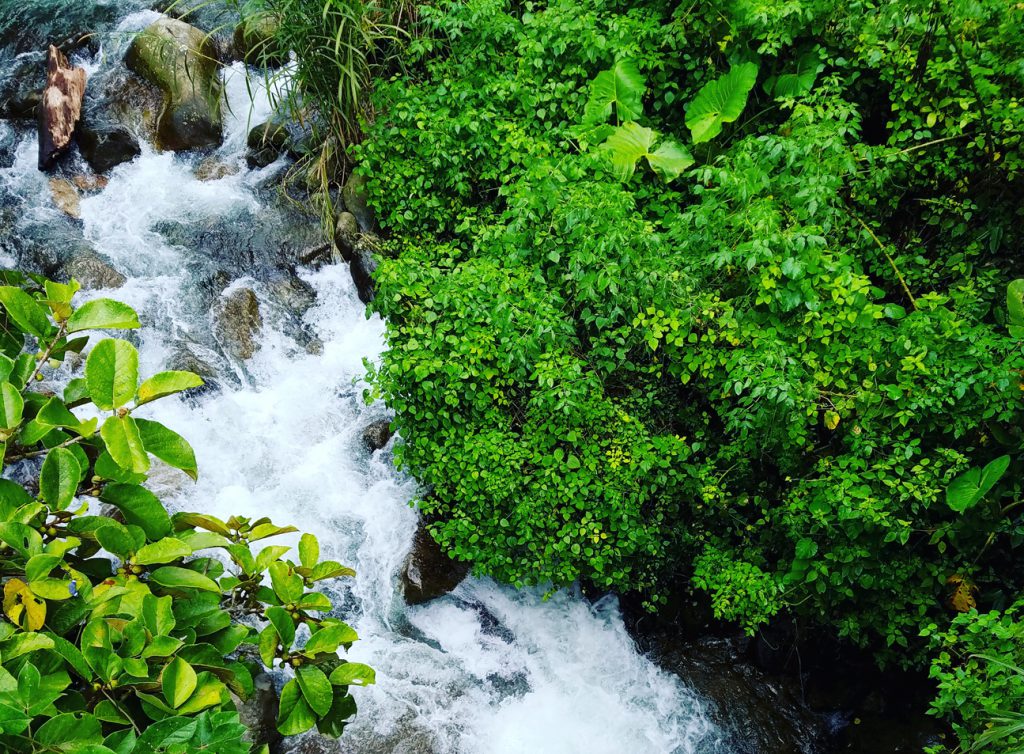
Climate Change Commitment
We hope that you can help us spread the word and educate others on how everyone can take action to address the threat of climate change. In the Paris climate change summit, Costa Rica voted to ratify into law a reduction on carbon dioxide emissions. We share this goal, “To lead the world towards carbon neutrality!”
In view of the rapidly changing global climate, Cloudbridge has embarked upon a Leadership program to encourage lifestyle changes that can reduce this serious threat.
Cloudbridge is creating positive change through actions and education in the community and abroad. Three of our staff – Casey McConnell, Tom Gode, and Linda Moskalyk – have attended the Climate Reality Leadership training sessions led by Al Gore, as part of the Climate Reality Project.
Conservation of Old Growth
Cloudbridge is committed to conserving its property as an invaluable tropical ecosystem for future generations. In a decade and a half, we have planted over 50,000 native trees and reestablished tree cover on most of the reserve’s 700+ hectares (1,540 acres). While we continue to reforest areas, we are also focused on conserving our small amount of old growth forest (area that has not been harvested since the turn of the 20th century) and also protecting those areas that have seen great strides in growth since 2002.
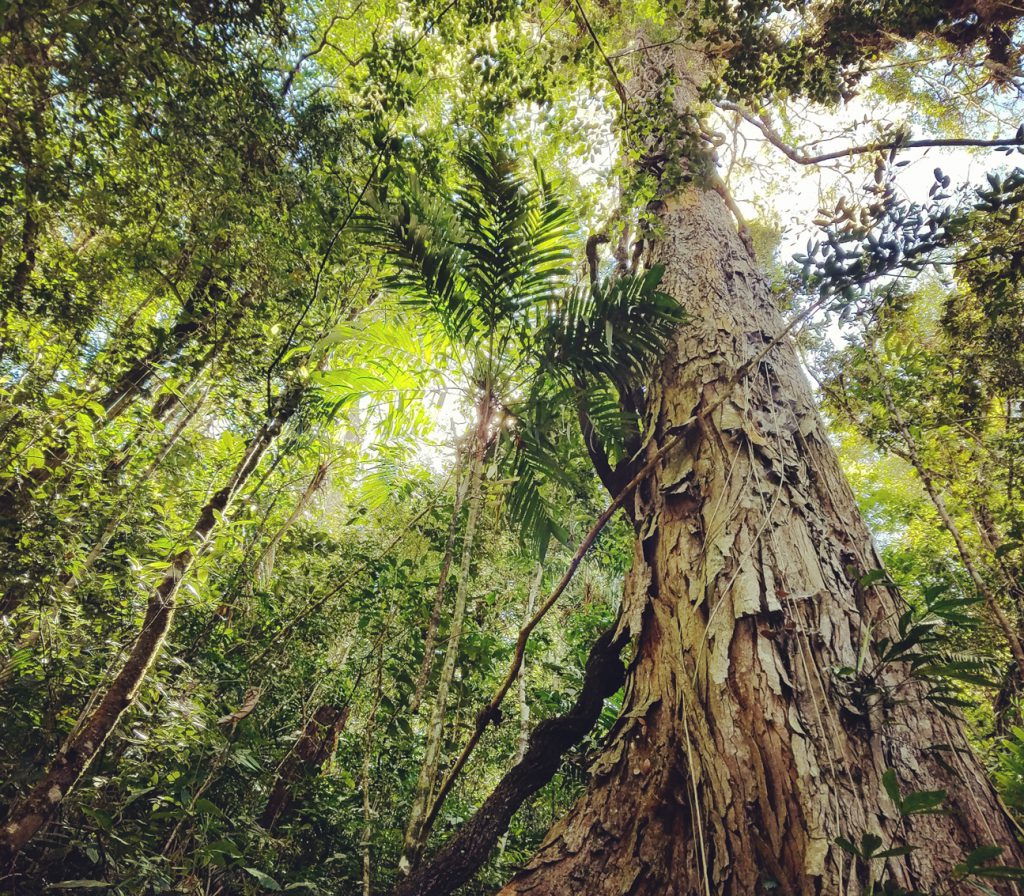
Reduction and Recycling of Waste
In an effort to reduce waste at Cloudbridge, food scraps are composted and used to enhance the soil when planting our seedlings. Cloudbridge staff and volunteers also assist in the recycling program in our local town of San Gerardo de Rivas by sorting and crushing cans and bottles in preparation for pickup.
Biodiversity
Cloudbridge’s reforestation efforts have helped to restore and preserve the native forest to protect the biodiversity for which neotropical forests, and those in Costa Rica in particular, are so famous. Deforestation is causing the loss of about 100 species every day — 4 species per hour. Preserving forest and planting trees also helps offset air pollution. As they grow, trees absorb carbon dioxide from the air. This project is but a tiny step to counteract global climate change, but every tree matters.
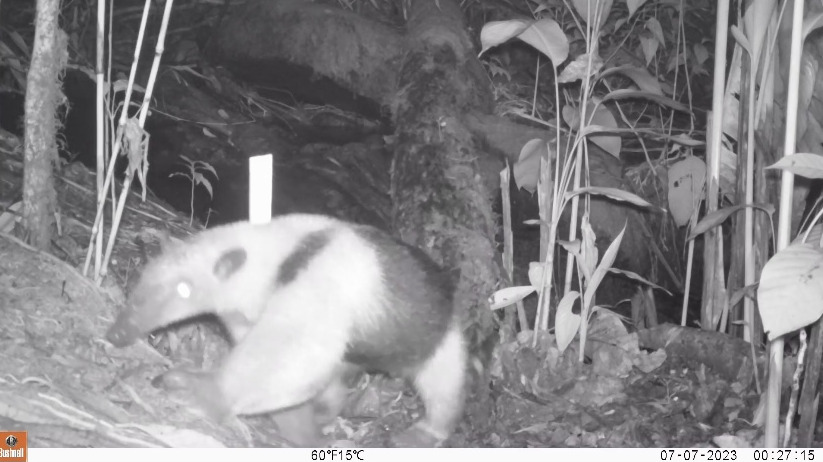
Recently our efforts have afforded us a few successes! Currently in 2023, images from our camera traps have shown that all six of Costa Rica’s cat species live in or pass through the reserve. These include: Ocelot (Leopardus pardalis), Oncilla (Leopardus tigrinus), Margay (Leopardus wiedii), Jaguar (Panthera onca) (see photo at top of page), Puma (Puma concolor), and Jaguarundi (Puma yagouaroundi).
Additionally, the endangered Baird’s Tapir (Tapirus bairdii) (the largest mammal in Central America) and the endangered Black-handed Spider Monkey (Ateles geoffroyi) can both be found inside Cloudbridge’s borders. Please see our species list page for complete lists of the flora and fauna identified in the reserve. Hunting on our property is strictly prohibited.
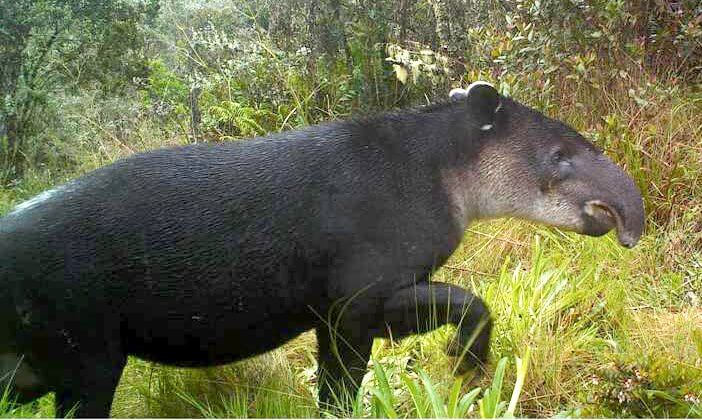
Plant-Based Diets
A plant-based diet is encouraged at our reserve as it is an important factor in combating climate change. 15% of all greenhouse gas emissions are produced from the livestock sector in agriculture. This is almost equivalent to the amount emitted from all cars, trucks and other automobiles combined. Eating meat has been a part of cultural practices and traditions and as the middle class increases worldwide, more and more people are including meat in their diet on a daily basis. This is one of the major causes of deforestation of tropical forests as more land is needed to raise animals, especially beef.
Food production also relies on other environmental resources. Both the water and land required for a calorie of meat is far greater than the amount required for plant-based foods. It is estimated that the greenhouse gas emissions of a vegetarian diet are half that of a meat based diet. A good reason to think about eating less meat.
What Can You Do?
We invite everyone to contribute in some positive way to tackle climate change. Learn more through our site, read the links below, support organizations you believe in, and visit us to see how to make changes in your life! Leading by example, you can help show a way to a sustainable future for all who live on this planet. We believe that small actions do make a difference, and if enough people step up and take action, we will succeed in saving our home, Planet Earth. Please consider giving support with monetary donations, fundraising at home, and/or volunteering at Cloudbridge.
Climate Change Information and Links:
- Climate Reality Project
- Costa Rica votes to ratify Paris agreement on climate change – Tico Times
- Climate Change – Government of Canada
- Global Climate Change – NASA
- Climate Change – Wikipedia
- To what extent could planting trees help solve climate change? – The Guardian
- How trees fight climate change – Arbor Day Foundation
Please visit our blog site for monthly updates and photos on our volunteers and researchers, their projects, and other activities at Cloudbridge Nature Reserve.
